 Sitting at the breakfast table and having coffee with my wife, the morning’s backyard entertainment was wild turkeys. Lots of absolutely goofy bird behavior. The morning prior, it was a red fox eating compost pile melon rinds, which probably explains an absence of turkeys that day. Two days earlier, there were four deer; one mature doe, two smaller and one spiked buck.
I shoot close by all of the time. Animals disappear with the noise, then return when I’m done, with the exception of the crows. Aggressive in behavior, they chased off the squirrels and chipmunks, then started harassing the turkeys, so I popped one with a Ruger 10/22 project gun and they never came back again. Smart birds, those crows. Same applies to coyotes.
I watched a TV show that illustrated how animal attacks on human are on a sharp rise. No mystery here as almost all attacks occurred in states and cosmopolitan centers where non-endangered species are strictly protected by law, animal control exists to represent animal rights and liberals bring their children outside to show them “Mike the Mountain Lion” sitting in a backyard tree – “Can you see the big kitty cat, Chad and Tricia? Who’s a good boy? Yes he is. Yes he is! He won’t hurt you”.
Similar nonsensical approaches to wild life now have urban cities hosting large coyote populations. Chicago leads with perhaps a thousand living in that city’s proper. Cook County went so far as to hire full time university consultants to study them, tag them, but not to harm them. Coexistence is highly overrated. Residents of Maine suffer from no such confusion as we don’t attempt to socially bond with our wildlife, so animal attacks are all but non-existent. For those who can’t figure out what to do with an interloping coyote, I offer this solution…
Putting the CZ 527 M1 American to work…
The term “understated elegance” would certainly apply to the CZ 527 M1 American, if we used that sort of fancy lad language at RealGuns. We’ll call it a clean rifle. Like a quality custom gun, it doesn’t need trick wood, metal work and an array of gadgets to make it a standout. The CZ 527 M1 American does not suggest an owner’s desperate cry for attention.
As a person who owns and shoots a number of CZ rifles, I believe CZ has really outdone themselves with the M1 American. The rifle has excellent balance, proportion, fit, and function. A good deal of original thought has obviously gone into this Micro Mauser’sdesign. One minor point. Really –
A brief message to scope and bolt handle designers…
I have the sense that when optics manufacturers began the quest for larger diameter scope tubes, oversize ocular lenses and jumbo magnification setting rings, they forgot the scope would eventually have to become part of a system that would include a rifle. As the Mauser action in this form has been around for a century longer than the current crop of optics, I’ll place the cause of this problem with the scope designer, but the potential for a solution with both. 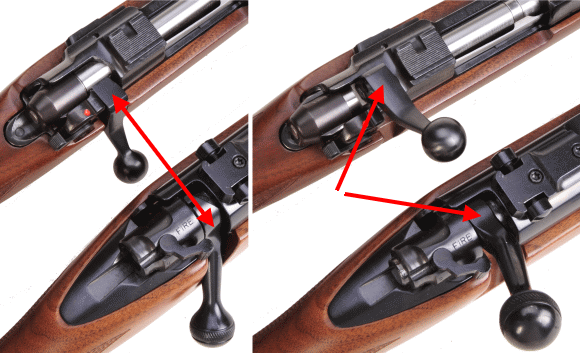 The CZ 527 bolt handle, top left, projects straight out from the bolt body while the Winchester bolt handle drops down into the stock. When open, top right, the CZ bolt handle rises into the gap between the bolt body and the scope by approximately 0.200″, while the Winchester bolt is scalloped to clear optics. It would be nice of CZ would scallop or at least thin the bolt handle to provide a little more latitude in scope selection and help us to keep those wayward optics down closer to bore centerline. That said, while I couldn’t install a Weaver Grand Slam 2-10x42mm or a similarly sized Bushnell Fullfield, I could easily install a Bushnell’s 4.5-30 x 50mm Elite 6500 or a Burris 16x Signature. In this case, I used factory rings and installed a well seasoned 1″ tube, 50mm objective Leupold scope with a maximum diameter of 1.375″ within line of bolt travel. Thank you for allowing me that moment of mountain… izing a very small mole hill.
Overcoming the .223 Remington snooze factor…
.
 Factory ammo and handload data generally comply with a SAAMI MAP of 55,000 PSI to assure safe operation in semiautomatic firearms. Added margins of safety often put pressure within a range of 50,000 – 52,000 PSI. The CIP pressure standard for the 5.56x45mm, 62,000 PSI plus a little, does not apply to the .223 Remington as these cartridge differ in piece part, assembly and chamber drawings, and SAAMI/CIP piezo transducer test methodology differ. One group’s standard 55,000 PSI is the other’s 62,000 PSI, even though pressure read at common points is probably very similar. Factory ammo and handload data generally comply with a SAAMI MAP of 55,000 PSI to assure safe operation in semiautomatic firearms. Added margins of safety often put pressure within a range of 50,000 – 52,000 PSI. The CIP pressure standard for the 5.56x45mm, 62,000 PSI plus a little, does not apply to the .223 Remington as these cartridge differ in piece part, assembly and chamber drawings, and SAAMI/CIP piezo transducer test methodology differ. One group’s standard 55,000 PSI is the other’s 62,000 PSI, even though pressure read at common points is probably very similar.Sierra’s handloading manual takes a stab at separating AR 15 from bolt action .223 Remington data. From what I see, when skimming through the data, light bullet charges seem to be heavier for the AR 15 than the bolt gun, probably to assure cycling. Medium weight bullets through 50+ grains are about the same and heavy bullets above 70 grains seem to be more heavily charged for the bolt gun. Sierra, within the bolt action section, cites velocity increases resulting from additional barrel length rather than from increased pressure. That said, some of the heavy bullets loaded in common with the AR 15 show a 5% increase in powder charge at the same COL. Maestro. A little music to go with that Sierra tap dance please.
The handload data that follows reflects a pressure range of 57,000 – 62,000 PSI and are not for use in AR 15 type firearms. In fact, as the load data is the result of my own experimentation, firearm strength calculations and a calculated risk I am willing to assume, I am not recommending use of this data by anyone who doesn’t want to go through the same analysis or has, but didn’t reach the same conclusions. Let’s just think of this exercise as satisfying Joe’s curiosity.
In the words of Sam Cooke, “Twistin’…”
No, I have no idea why I placed a gratuitous image of .223 Remington brass next to this passage. They just happened to be on the table next to the bullets and I liked the natural composition. A little weird, but it was fun…
Nothing of note in handloading, other than the 55 Remington PSP bullet was deliberately seated above it cannelure. After the third round, I opened the bolt and the empty came out with what looked like the tip of a firing pin. Uh oh… Turned out to be the decapping pin from my .223 Remington die set. I wasn’t decapping, just case sizing new brass, so it must have snapped off and was carried along in the handloading process. Interesting that it remained in the case after discharge, but fell out from the influence of gravity on extraction, which suggests it was aft of the powder charge… The rifle was well mannered throughout. Rounds fed from the detachable magazine without incident or extra effort. I almost always shoot CZ rifles without the aid of the single set trigger function. In this case, the single set function accounted for half an inch at one hundred yards in group size, the consistent difference in group size when comparing with and without use of this trigger feature.
This one I have to share, a ten shot, one hundred yard group with Berger bullets. None of the selected round and loads shot outside an inch and one quarter at one hundred yards, with the 55 grain Remington PSP loads grouping to that size. It is an easy gun to shoot; light weight, excellent trigger, no recoil. I wouldn’t mind parking my .45-70 Guide Gun for a chance to take the little M527 hog hunting with perhaps a little more stoutly constructed bullet. I know it would be a good coyote gun. Conclusion If someone wanted a sporter weight rifle, chambered for the .223 Remington, the CZ 527 M1 American would have to be at the top of the list. Excellent quality and workmanship, beautiful little gun, light weight and a good shooter. I think it would make a great legacy rifle. Something to shoot and something to pass along to a young shooter. Nice gun. The CZ 527 M1 American Part I |
||||||||||||||||||||||||||||||||||||||||||||||||||||||||||||||||||||||||||||||||||||||||||||||||||||||||||||||
Comments appearing below are posted by individuals in a free exchange, not associated with Real Guns. Therefore RGI Media takes no responsibility for information appearing in the comments section. Reader judgement is essential.

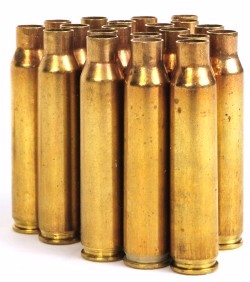 The CZ 57 has a 1:12″ twist, which is common for sporting rifles chambered for the .223 Remington. Law enforcement and military applications often twist the .223 Remington tighter, 1:10″ or 1:9″, to facilitate the use of near seventy and plus grain bullets. These heavy weights are less applicable to varmint and small game hunting as they tend to have the trajectory of a thrown hand grenade. Attempting to apply these tight twist rates to a light weight varmint/small game bullet would result in excessive rotational speed, which would amplify bullet design or material imperfections and cause a loss of accuracy. I pretty much went with bullets I load for my .220 Swift.
The CZ 57 has a 1:12″ twist, which is common for sporting rifles chambered for the .223 Remington. Law enforcement and military applications often twist the .223 Remington tighter, 1:10″ or 1:9″, to facilitate the use of near seventy and plus grain bullets. These heavy weights are less applicable to varmint and small game hunting as they tend to have the trajectory of a thrown hand grenade. Attempting to apply these tight twist rates to a light weight varmint/small game bullet would result in excessive rotational speed, which would amplify bullet design or material imperfections and cause a loss of accuracy. I pretty much went with bullets I load for my .220 Swift.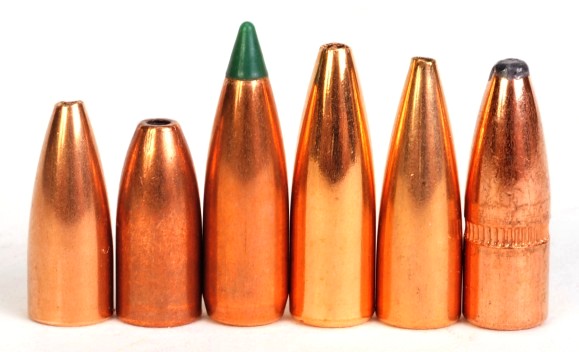
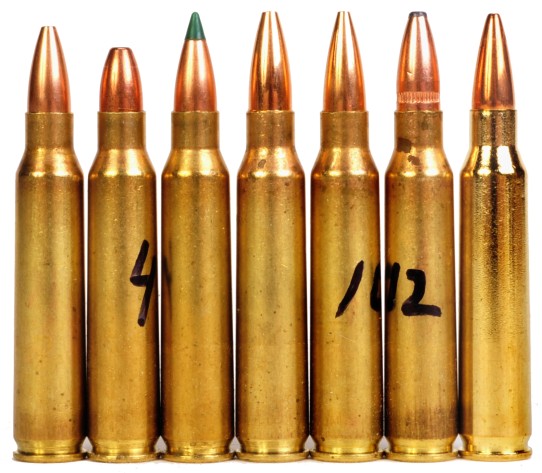
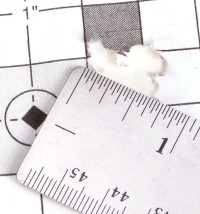 No lumpy or cratered primers, no hard to extract empties. The thin barrel did tend to warm up a bit after five rounds or so as would be expected. There was no stinging or much of any other type of mechanical reaction to barrel temperature.
No lumpy or cratered primers, no hard to extract empties. The thin barrel did tend to warm up a bit after five rounds or so as would be expected. There was no stinging or much of any other type of mechanical reaction to barrel temperature.
Email Notification